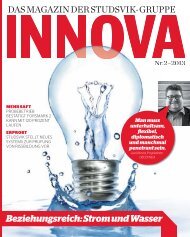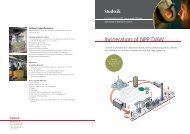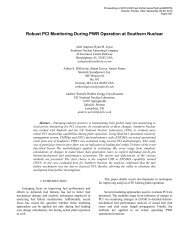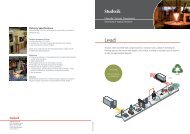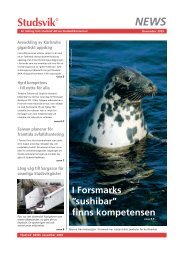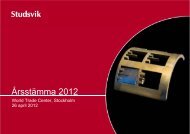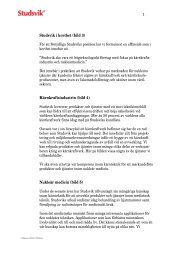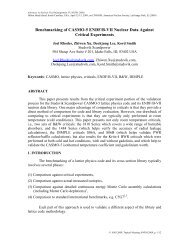Effect of CASMO-5 Cross-Section Data and Doppler ... - Studsvik
Effect of CASMO-5 Cross-Section Data and Doppler ... - Studsvik
Effect of CASMO-5 Cross-Section Data and Doppler ... - Studsvik
Create successful ePaper yourself
Turn your PDF publications into a flip-book with our unique Google optimized e-Paper software.
Gerardo Gr<strong>and</strong>i et.al.Fig. 4 compares the <strong>Doppler</strong> reactivity feedback <strong>and</strong> the (core average) <strong>Doppler</strong> temperature evolutionduring the rod ejection accident.<strong>Doppler</strong> Reactivity ($)0.200.00-0.20-0.40-0.60-0.80<strong>CASMO</strong>-4<strong>CASMO</strong>-5<strong>Doppler</strong> Reactivity ($)-0.80-0.85-0.90-0.95-1.000.0 1.0 2.0 3.0 4.0 5.0Time (s)<strong>Doppler</strong> Temperature (K)750700650600550<strong>CASMO</strong>-4<strong>CASMO</strong>-5-1.000.0 0.5 1.0 1.5 2.0 2.5 3.0Time (s)5000.0 0.5 1.0 1.5 2.0 2.5 3.0Time (s)Figure 4. <strong>Doppler</strong> reactivity <strong>and</strong> <strong>Doppler</strong> temperature. <strong>Effect</strong> <strong>of</strong> <strong>CASMO</strong>-5 cross-section data.Note that the <strong>Doppler</strong> reactivity is the same in the ‘<strong>CASMO</strong>-4’ <strong>and</strong> ‘<strong>CASMO</strong>-5’ cases. This result iscounter intuitive due the more negative fuel temperature coefficient reported in Table III. However, sincethe external positive reactivity inserted in both cases differ only ~7 pcm; the <strong>Doppler</strong> reactivity tocompensate the inserted reactivity must be approximately the same. Due to the ~10% difference in the<strong>Doppler</strong> coefficient (see Table III), the <strong>Doppler</strong> temperature increase in the ‘<strong>CASMO</strong>-5’ case is ~10%smaller.Table IV summarizes the rod ejection accident results, in terms <strong>of</strong> power <strong>and</strong> fuel enthalpy, for ‘<strong>CASMO</strong>-4’, ‘<strong>CASMO</strong>-5’, <strong>and</strong> ‘<strong>CASMO</strong>-5 Asymptotic’ cases.The main observations derived from Table IV are: The energy release in the ‘<strong>CASMO</strong>-5’ case is 88 % <strong>of</strong> the energy release in the ‘<strong>CASMO</strong>-4’ case. Since the energy release is smaller in ‘<strong>CASMO</strong>-5’ <strong>and</strong> the peaking factors during the transient arealmost identical (not shown), the enthalpy rise in the ‘<strong>CASMO</strong>-5’ case is approximately ~88% <strong>of</strong>the enthalpy rise in the ‘<strong>CASMO</strong>-4’ case. The resonance treatment implemented in ‘<strong>CASMO</strong>-5’ is the key element for the fuel enthalpyreduction during this transient.PHYSOR 2010 – Advances in Reactor Physics to Power the Nuclear RenaissancePittsburgh, Pennsylvania, USA, May 9-14, 20108/13



